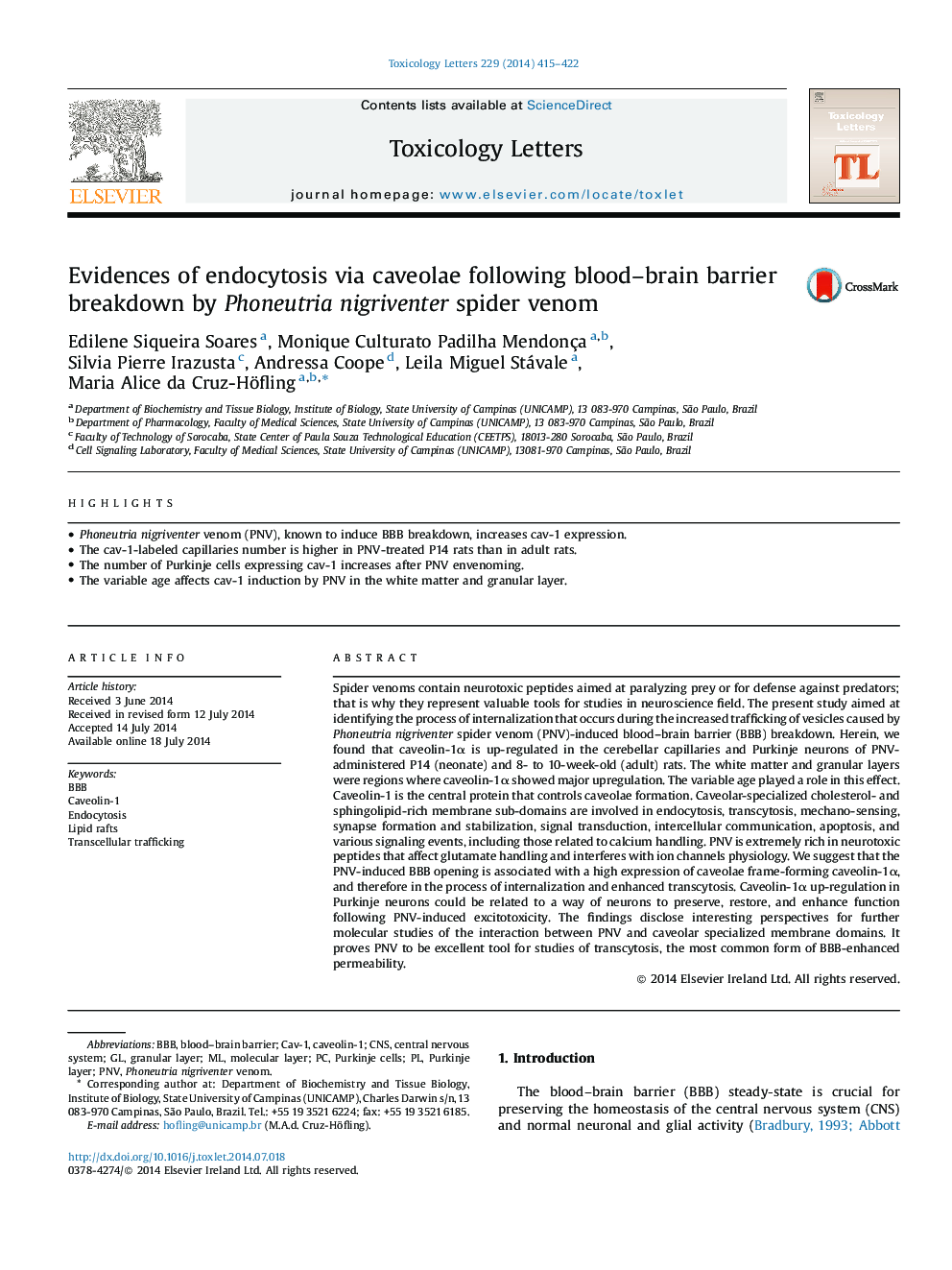| کد مقاله | کد نشریه | سال انتشار | مقاله انگلیسی | نسخه تمام متن |
|---|---|---|---|---|
| 5860125 | 1133166 | 2014 | 8 صفحه PDF | دانلود رایگان |

- Phoneutria nigriventer venom (PNV), known to induce BBB breakdown, increases cav-1 expression.
- The cav-1-labeled capillaries number is higher in PNV-treated P14 rats than in adult rats.
- The number of Purkinje cells expressing cav-1 increases after PNV envenoming.
- The variable age affects cav-1 induction by PNV in the white matter and granular layer.
Spider venoms contain neurotoxic peptides aimed at paralyzing prey or for defense against predators; that is why they represent valuable tools for studies in neuroscience field. The present study aimed at identifying the process of internalization that occurs during the increased trafficking of vesicles caused by Phoneutria nigriventer spider venom (PNV)-induced blood-brain barrier (BBB) breakdown. Herein, we found that caveolin-1α is up-regulated in the cerebellar capillaries and Purkinje neurons of PNV-administered P14 (neonate) and 8- to 10-week-old (adult) rats. The white matter and granular layers were regions where caveolin-1α showed major upregulation. The variable age played a role in this effect. Caveolin-1 is the central protein that controls caveolae formation. Caveolar-specialized cholesterol- and sphingolipid-rich membrane sub-domains are involved in endocytosis, transcytosis, mechano-sensing, synapse formation and stabilization, signal transduction, intercellular communication, apoptosis, and various signaling events, including those related to calcium handling. PNV is extremely rich in neurotoxic peptides that affect glutamate handling and interferes with ion channels physiology. We suggest that the PNV-induced BBB opening is associated with a high expression of caveolae frame-forming caveolin-1α, and therefore in the process of internalization and enhanced transcytosis. Caveolin-1α up-regulation in Purkinje neurons could be related to a way of neurons to preserve, restore, and enhance function following PNV-induced excitotoxicity. The findings disclose interesting perspectives for further molecular studies of the interaction between PNV and caveolar specialized membrane domains. It proves PNV to be excellent tool for studies of transcytosis, the most common form of BBB-enhanced permeability.
Journal: Toxicology Letters - Volume 229, Issue 3, 17 September 2014, Pages 415-422